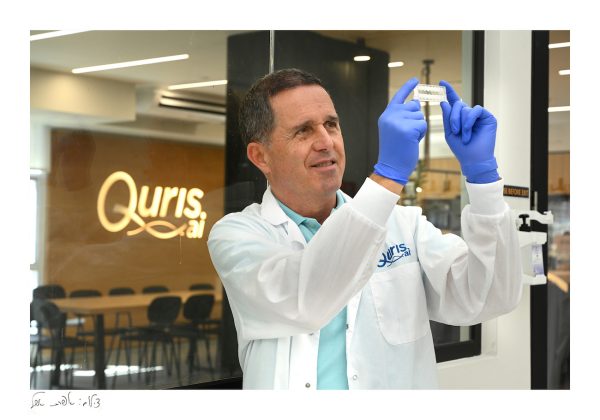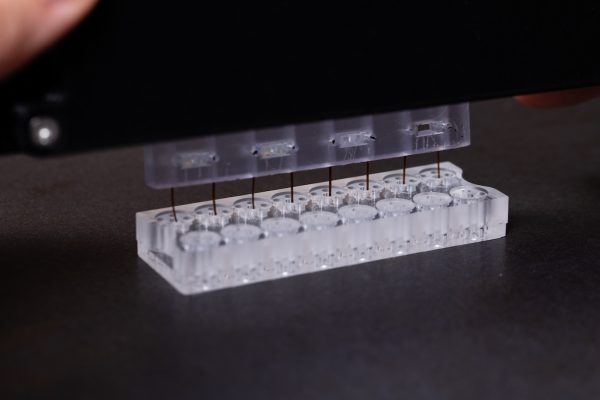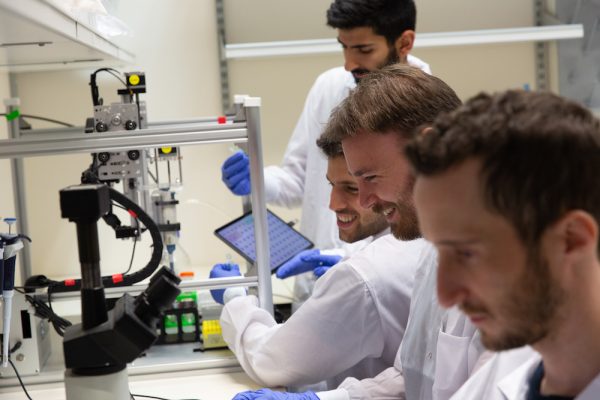Quris-AI is an artificial intelligence company that is disrupting drug development and its machine-learning bio-platform better predicts which drug candidates will safely work in humans, avoiding major costs of failed clinical trials. To learn more about the company, Pulse 2.0 interviewed Quris-AI CEO Isaac Bentwich, MD.
Isaac Bentwich’s Background

Bentwich is a physician and entrepreneur with a passion for leading interdisciplinary teams of scientists and technologists to tackle impactful challenges in the intersection between machine learning and life sciences to utilize the resulting solutions for the betterment of humanity. Before Quris-AI, Bentwich founded and led 3 other bio-AI technology companies, each of which led revolutions in medicine, genomics, agriculture, and conservation.
Formation Of Quris-AI
How did the idea of Quris-AI come together? Bentwich noted that Quris-AI has been in the making in some ways for many years.
“Nearly two decades ago, my colleagues and I discovered microRNA genes and developed the world’s first microRNA chip using a similar integrated Bio-AI approach that is guiding Quris-AI today,” said Bentwich. “I founded Rosetta Genomics way back in 2000 and used powerful machine learning to analyze the human genome. The machine learning engine was trained and validated by our high-throughput biology sensing platform. Using this approach, we discovered hundreds of novel microRNA genes, more so than all the world’s universities combined, and used these genes for novel cancer diagnostics.”
As Bentwich’s career continued, it became more clear that remarkable advances in critical technologies such as organ-on-a-chip, nano-sensing, and AI would be the center point of revolutionary changes to our drug development processes.
“The current drug discovery and development model is broken. For over a hundred years, animal testing has been used as a means of “clinical prediction” to identify what drugs are clinically safe and efficacious, and hence merit entry to clinical trials. However, animal testing is an extremely poor predictor of clinical safety and efficacy – with almost 92% of drug candidates that successfully pass animal testing failing in clinical trials, putting countless lives on the line and costing pharma companies more than $53 billion annually,” Bentwich added. “At Quris-AI, we are applying our Bio-AI platform approach built on an unrivaled combination of cutting-edge AI together with advanced patient-on-a-chip, AI and real-time nano-sensing technologies to disrupt the drug development process and finally solve the clinical safety prediction challenge for new drug candidates.”
Challenges Faced Building The Company
What were some of the challenges Bentwich faced in building the company? “Bringing together the best minds across a variety of distinct disciplines and creating a cross-functional and cross-Atlantic corporate culture for everyone to effectively collaborate has been an enormous challenge and an extremely gratifying accomplishment. I don’t think there is a comparable team in our industry, and I plan to dedicate the coming years to growing and cultivating our exceptional team,” Bentwich acknowledged.
Core Products

What are Quris-AI’s core products? Bentwich pointed out that Quris-AI has developed a disruptive Bio-AI platform to accurately determine which drug candidates will safely work in humans.
“Leveraging AI that can deal with terabytes of data, interconnected miniaturized human organ systems on chips, and stem-cell genomic diversity – the Quris Bio-AI Clinical Prediction Platform will improve clinical safety prediction, reduce drug development cost and duration, and eliminate the faulty reliance on animal testing,” Bentwich explained.
Significant Milestones

Throughout 2022, Quris fast-tracked its R&D, expanded its team, and established partnerships with leading pharma companies to revolutionize drug development. A few highlights include:
— Merck KGaA signed a multi-year agreement with Quris and is currently testing Quris’ clinical safety prediction platform to identify potential liver toxicity risks for drug candidates.
— In partnership with The New York Stem Cell Foundation (NYSCF) Research Institute, Quris-AI is actively training its AI platform on NYSCF’s unmatched stem-cell automation technology to rapidly screen thousands of potential drug formulations on hundreds of genetically diverse, miniaturized “patients-on-a-chip” to test efficacy at a fraction of the cost.
— Plus Quris-AI was named to the 2022 Fast Company Most Innovative Companies List and the Leader in AI Drug Safety Prediction by Frost & Sullivan. To date, Quris-AI has earned 29 granted and pending patents for its novel BioAI platform.
Funding
Last year, Quris secured an additional $9 million in seed funding, bringing its total seed round to $37 million, from SoftBank and other investors. The funding is being used to to continue advancing its Bio-AI platform, grow the team and strengthen industry collaborations.
Total Addressable Market (TAM)
What is the total addressable market that Quris-AI is pursuing? “Drugs that fail clinical trials (92% of novel drugs) because of inaccurate safety predictions cost pharma companies $53 billion annually. Quris-AI has the potential to revolutionize the entire pharmaceutical industry, from how drugs are discovered to how existing drugs are personalized,” Bentwich analyzed.
Differentiation From The Competition
What differentiates Quris-AI from the competition?
“While other AI pharma companies can determine new drug targets, design molecules, and their validation, Quris is the first AI breakthrough to close the clinical prediction gap. These are gaps that no AI pharma or drug developer has been able to close to date. We are tackling pharma’s greatest challenge: predicting which drugs will work safely in humans,” Bentwich replied. “This not only saves hundreds of millions of dollars for each new drug developed, but it also brings down the cost to consumers and gets drugs to market faster. It is the first Bio-AI clinical prediction platform that simulates clinical trials by leveraging a patented organ-on-chip system through the use of AI and stem-cell-derived tissue. This means that Quris is able to simulate how a real human body reacts to drugs without relying on time-intense, inaccurate animal testing. Whereas previous innovators were limited in terms of scalability, Quris-AI has broken those barriers, thereby opening the potential for revolutionizing the market.”
Future Company Goals
What are some of Quris-AI’s future company goals?
Bentwich pointed out that as spurred by new regulations like the FDA Modernization Act 2.0, drug developers will likely race to embrace breakthrough innovations.
“But while AI-driven drug discovery has become the leading frontier for pharma innovation and AI pharma companies have shown significant success in various stages of the drug discovery and development funnel, they still can’t predict clinical safety of a drug candidate. Quris-AI is the only one that completely changes the clinical prediction paradigm. However, the future is not only predicting which drugs will work safely on the human body, getting them to market faster and cutting the costs of production, but also better tailoring drugs to patients’ individual needs,” Bentwich concluded. “Rare diseases deserve more attention from the pharma community, with more than 300 million people battling 7,000+ rare diseases. While initially focusing on rare genetic diseases that cannot be modeled in animals, the potential applications for its technology platform span across all disease areas – including finding new ways for patients to benefit from existing drugs, or drug combinations, while better predicting clinical safety and efficacy to accelerate their path to market. We are eager to see how our breakthrough platform can help both large players in the pharma industry cut costs and improve drug safety, as well as reshaping how drugs are developed and tested to meet personalized medicine requirements and drastically speed the introduction of effective drugs for rare diseases.”


